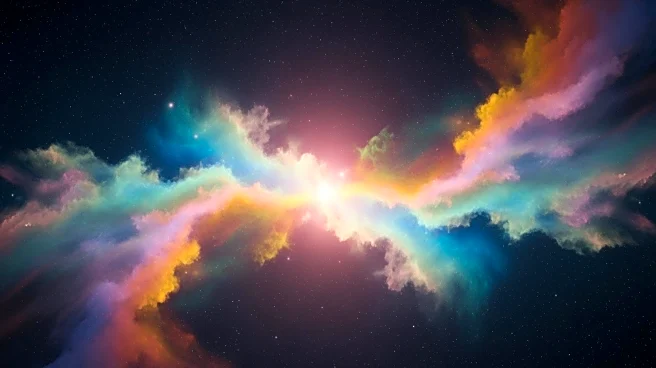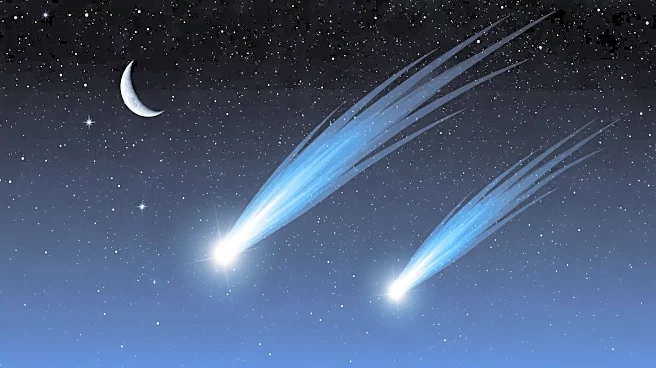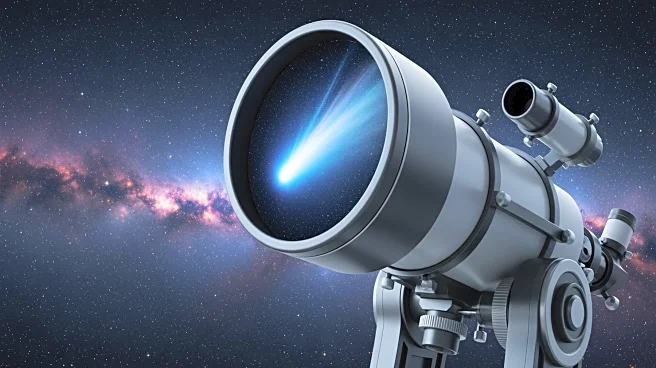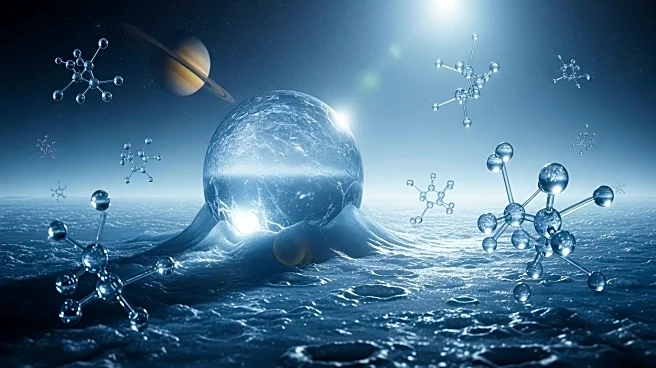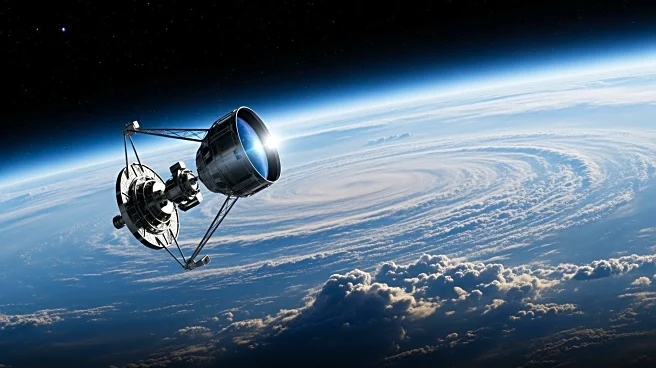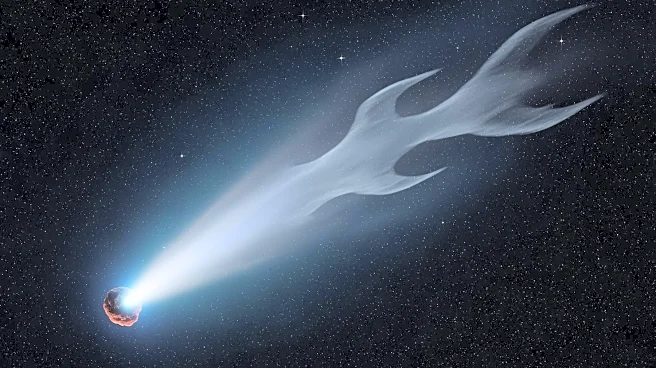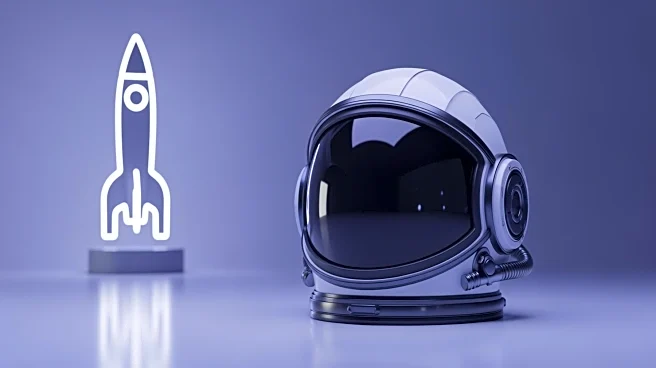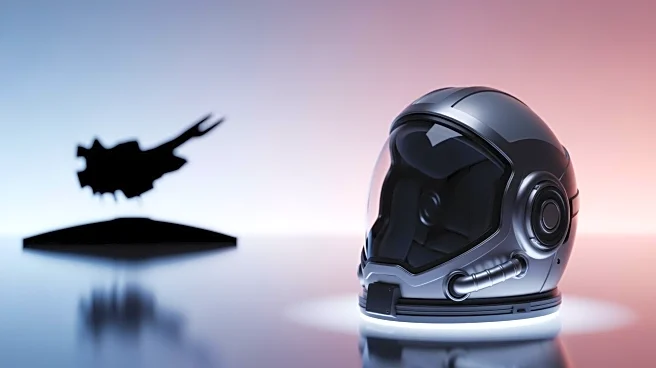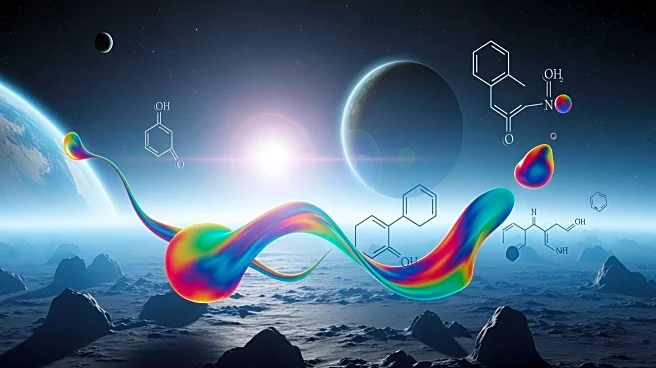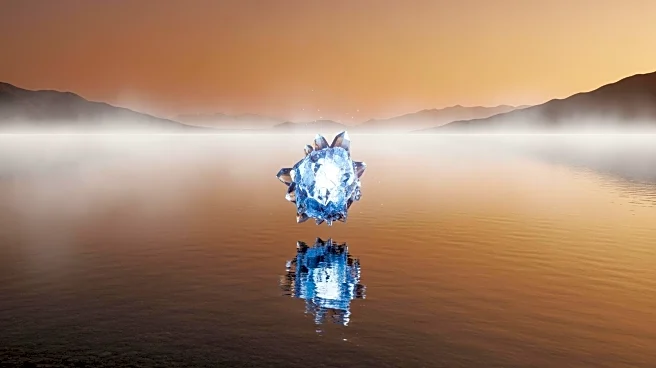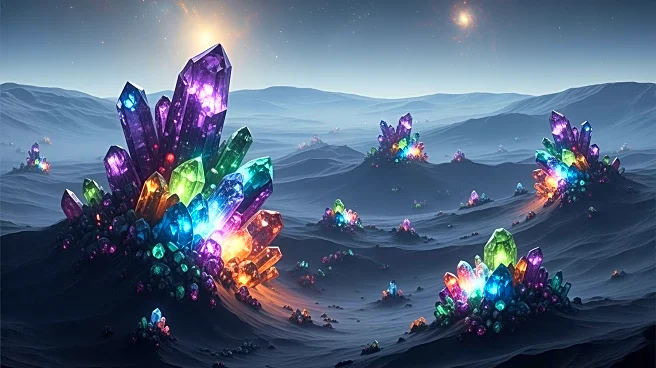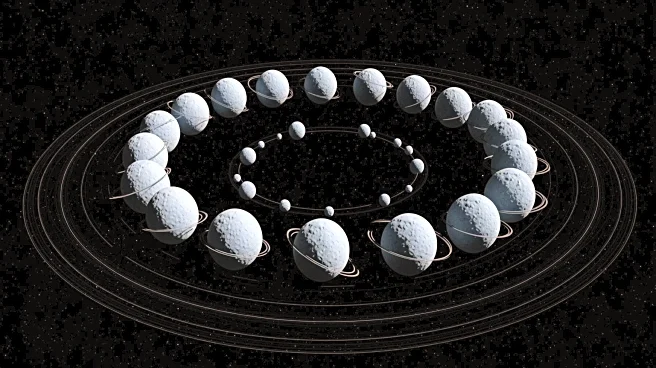What's Happening?
Scientists have measured the colors of microbes living in Earth's stratosphere, which produce pigments to protect against UV light. These pigments could serve as biosignatures for detecting life on other planets. The study, led by Ligia Coelho at Cornell
University, involved culturing microbes collected from high altitudes and analyzing their reflectance spectra. The findings suggest that similar airborne life forms on other planets could be detected by analyzing the light they reflect. This research provides new reference data for modeling and detecting life in clouds, potentially aiding future space telescopes in the search for extraterrestrial life.
Why It's Important?
The discovery of microbial pigments as potential biosignatures expands the methods available for detecting life beyond Earth. This research could significantly impact the field of astrobiology by providing a new approach to identifying life on exoplanets. If successful, it could lead to breakthroughs in understanding the conditions necessary for life and the potential for habitable environments elsewhere in the galaxy. The study also highlights the importance of developing advanced instruments capable of detecting these biosignatures from great distances, which could enhance our ability to explore and understand the universe.
What's Next?
Future space missions, such as NASA's proposed Habitable Worlds Observatory, may utilize these findings to improve the search for life in other star systems. However, detecting these biosignatures will require high concentrations of airborne microbes, similar to those found in ocean algae blooms. Continued research and technological advancements are necessary to refine detection methods and increase the likelihood of identifying extraterrestrial life. Collaboration between astronomers and biologists will be crucial in developing instruments capable of distinguishing these biosignatures from other planetary signals.
Beyond the Headlines
The study raises questions about the universality of life forms and their adaptations to environmental stressors. While the pigments found in Earth's stratosphere may serve as biosignatures, the assumption that life on other planets would produce similar compounds is speculative. This research encourages a broader exploration of potential life forms and their unique adaptations, challenging scientists to consider diverse possibilities in the search for extraterrestrial life.
